Today, NTEN’s Amy Sample Ward shared this fabulous video on Facebook. It is from the recent workshop that NTEN and NPower in Charlotte, NC to help participants understand the power of data to drive decision-making for nonprofits. It’s a topic that NTEN’s executive director, Holly Ross, has covered with this must-read post: “Four Ways Nonprofits Can Increase Their Impact With Data.”
NTEN is also doing this flash poll to learn how nonprofits make sense of their own data. I’d love to see a survey of nonprofit measurement practice that quantifies this. I’d be curious to see a benchmarking study on nonprofits on this topic that looks at how nonprofits apply measurement techniques and tools to improve their programs and demonstrate impact, including social media measurement.
Measuring Networked Nonprofits: Using Data for Social Change is the topic of the book I’m co-authoring with KD Paine. It is a look at measurement and learning practices when social media is in the mix. One of the chapters is on organizational culture – what’s in the DNA of a “data-driven” nonprofit and what are the incremental steps for change?
As part of my work as Visiting Scholar at the David and Lucile Packard Foundation, I’m facilitating peer exchange groups on measuring the networked nonprofit with 60 grantees. These sessions have become rich focus groups for the book writing. I did an assessment of participants current level of social media practice using my Crawl Walk Run Fly framework to better understand measurement practices.
Here’s a summary:
There was a range of practice for using data and measurement to improve social media and demonstrate impact:
Crawl
Does not know where to start. Does data collection from time-to-time, but not formal reporting. Does not have a dashboard or simple collection method. Often overwhelmed. Does a lot of “drive by” analysis, but no monthly review of trends. Does not have a reflection process for analyzing success or failure to take into next use or campaign.
Walk
Regularly collects data but in a bunch of different spreadsheets and collected by different people. Data is focused on the metrics that are specific to social media channel and uses it to improve for content, messaging, and engagement on specific channels. Social media data is not linked to higher level organizational results or mission-driven goals. Discussions on how to improve results are occasionally part of staff meetings and rarely reports are shared with or requested by board.
Run
Has a system and dashboard for collecting measurement data that is shared with different departments. Has different views or level of detail for senior leaders, implementors, and different departments. Holds weekly campaign check-ins to evaluate what’s working and what’s not across communications channels, as well as, any specific social media feedback received that would help shape our future campaigns or social media use. Monitors feedback from target audience in real time but balances with trend or survey data. Documents quantitative results against goals and value when asked by senior leadership. Works with measurement consultants or specialists to improve skills and capacity.
Fly
In addition to weekly check-ins, the dashboard includes key performance metrics related to goals as well as more detailed metrics. Has shared organizational dashboard across departments and process for analyzing, discussing, and applying results. Presents a regular report to senior leadership which details high level successes, challenges, and recommendations for moving forward. Presents a report with quantitative analysis that demonstrates value. Staff performance reviews incorporate how well the organization is doing on KPIs. Works with measurement consultants or specialists to improve skills and capacity or to commission independent study.
Participants identified two key areas of “Measurement Stress” – one was cultural and the other technical or systems-related.
Organizational Culture
- Finding the time to devote to measurement.
- Articulating measurable goals
- Overwhelmed by data collection process
Technical or Systems Challenges
- Getting accurate data and the right information
- A streamlined and well designed dashboard
- Better data analysis, linking it to decisions
- Conversion, as measured in dollars and cents, as a means to evaluate and justify the time spent on social media.
- How to measure behavioral change
- Picking the right measurement tool for the job and how to use it
- How to apply data to improve on social media: What does it mean?
Where is your nonprofit when it comes to social media measurement practice? Are you crawl, walk, run, or fly? What does that look like? How is your nonprofit using data and measurement to make effective decisions about networked approaches and social media?
Please share your stories in the comments below – you might be featured in the book!

Leave a Reply